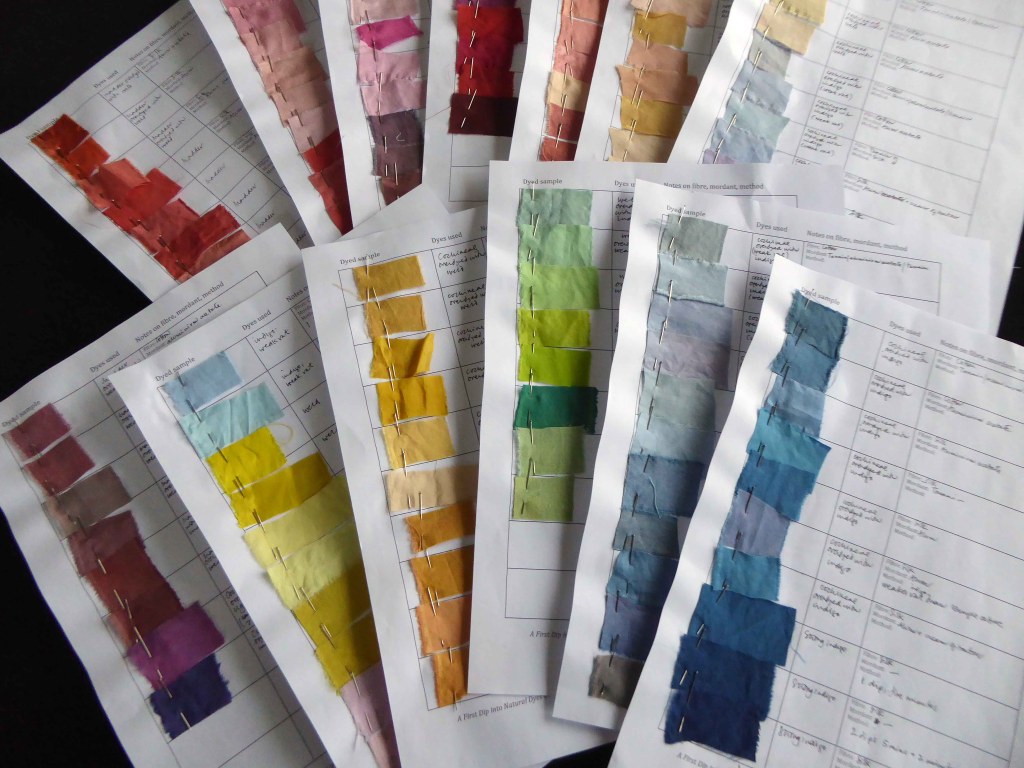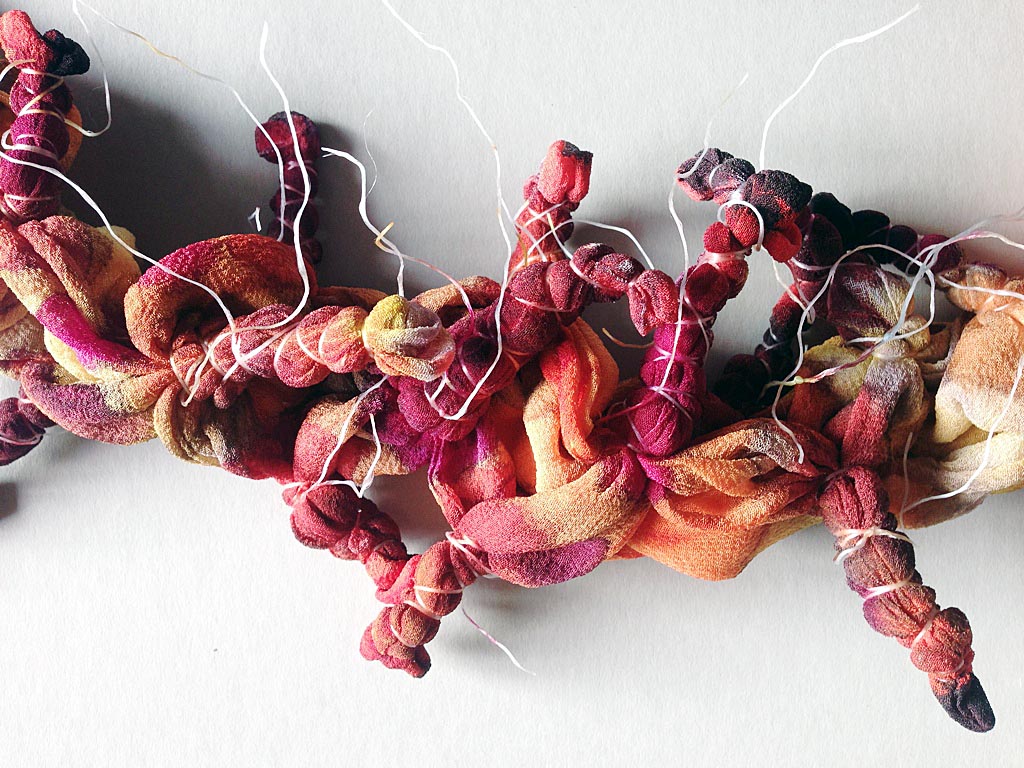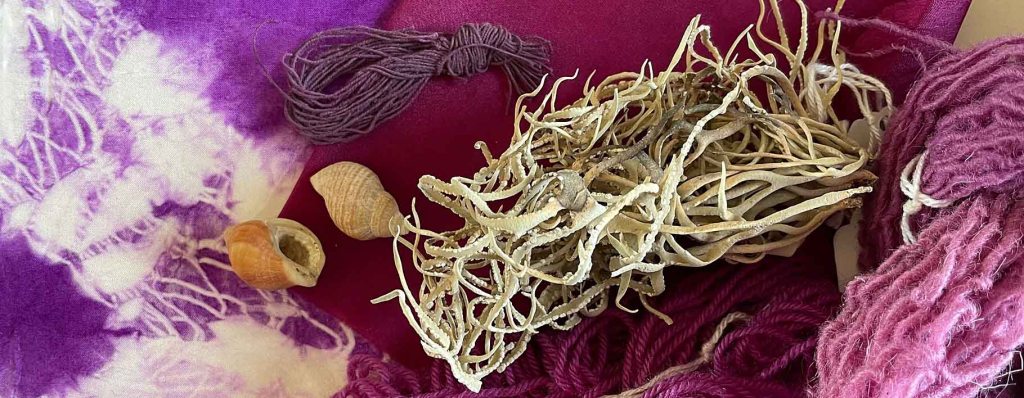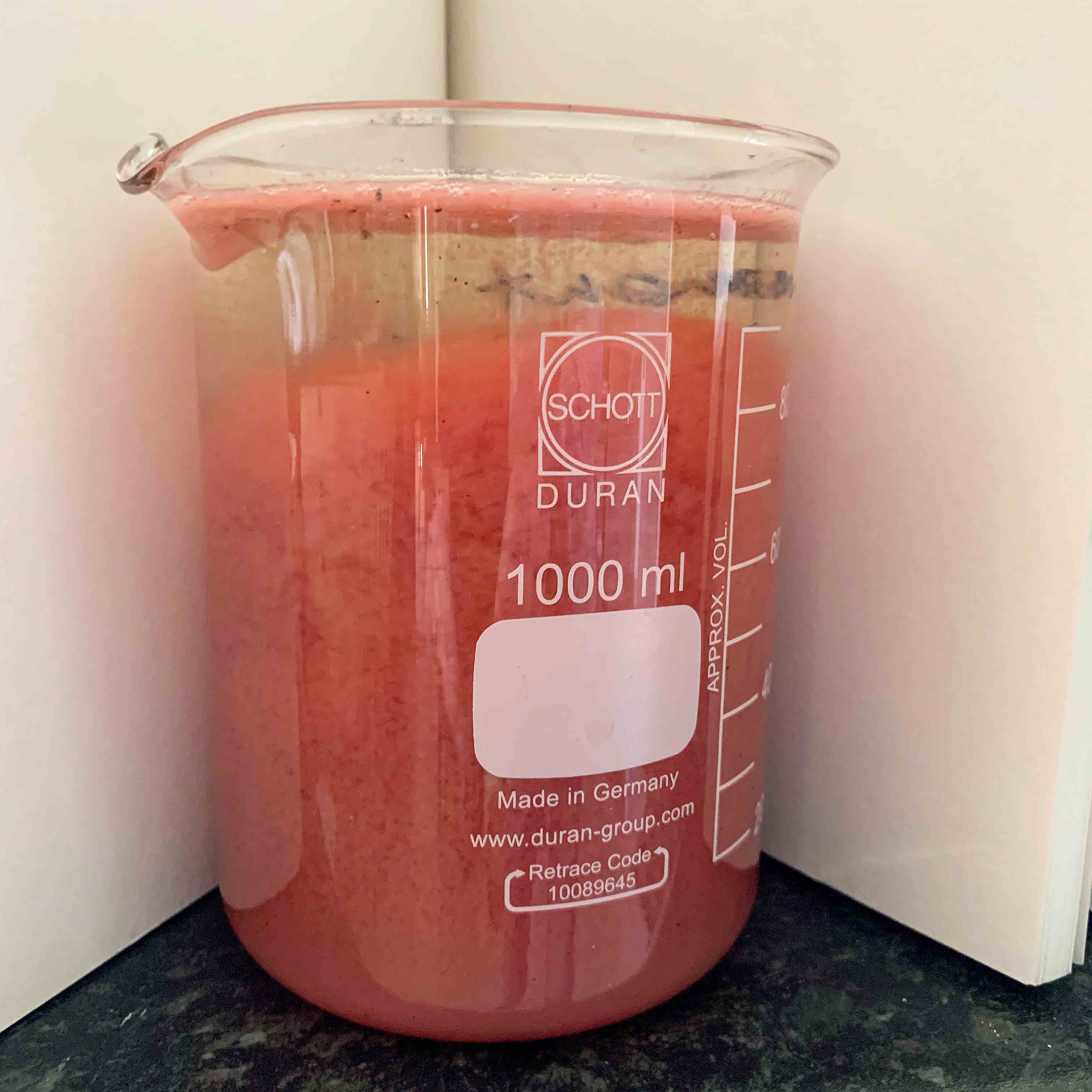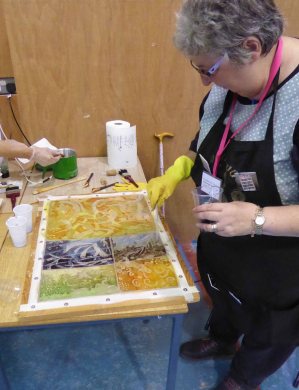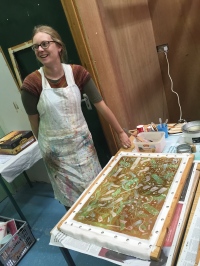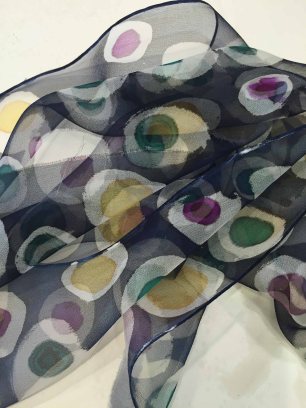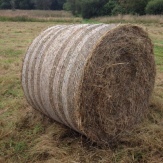It’s time to take up the old quill pen and brush the rust and spiders from my WordPress files. I am horrified to find it is almost a year since I posted – and I apologise. I am still here, but life has been very busy with new and ongoing research, teaching, presentations, looking after the garden, fundraising and various distractions I don’t need to trouble you with.
I have two courses coming up in June and two more in August. I’m listing them in chronological order:
RHS Rosemoor, Great Torrington, Devon
Natural Dyes: Start with a Scarf
June 10th, 2023
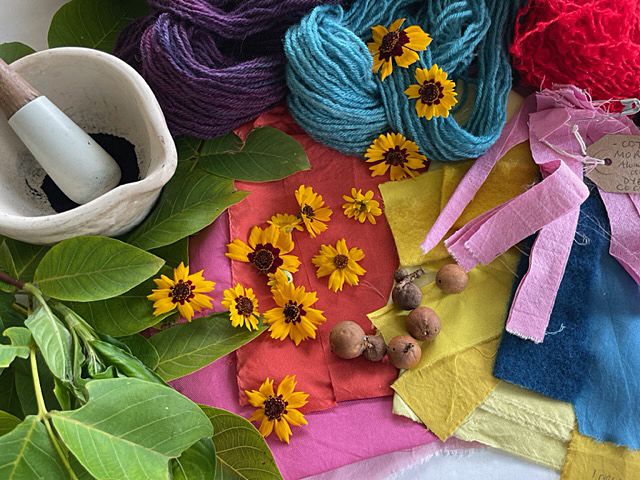
This course is set up to teach the basics of natural dyeing but also to create a dyed silk scarf to take home. I’ll also throw in some fascinating history plus tales about dyes and their individual stories. Students will learn how to prepare fabrics and dyes, and how to mordant silk. By the end of the day, students will dye a beautiful silk scarf using simple decorative techniques. If there is dye plant material growing in the Education Garden we will also be able to use some of it.
Book here
West Dean College (nr Chichester, Sussex)
Creative Dyeing on Silk
23rd – 25th June 2023
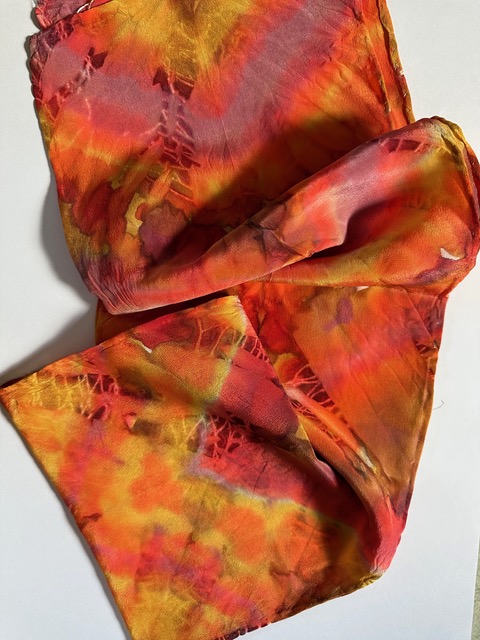
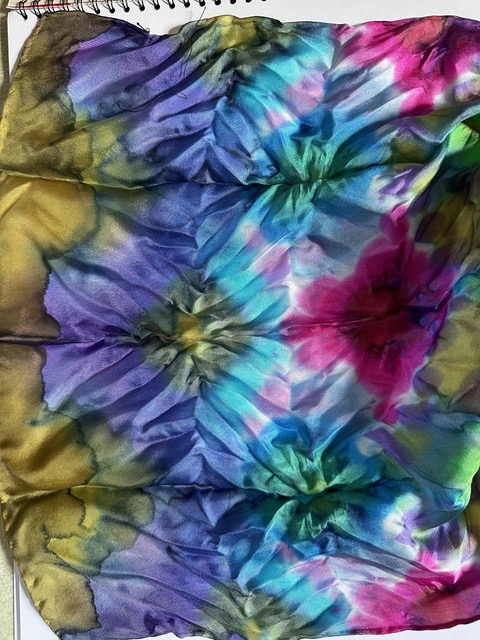

Work with vibrant steam-fixed dyes to explore various ways of creating designs and patterns on silk. You can use different silk weights and types and will use wax resist, several shibori techniques and some resist fluids, either separately or in combination. Sample pieces can be worked on small frames by using wax applied with brushes, traditional tjantings, stamps and found objects. You will layer wax and dye to create more complex patterns. The wax-out and steaming processes will be demonstrated and explained. All these techniques are suited to painting fabric lengths too and can also be adapted for use with natural dyes.
Scarves are generally worked on the frames provided and scarf blanks or silk fabric will be available to buy. You may also bring your own scarf blanks, preferably oblong in shape, but no larger than 180 x 45 cm.
The course will suit those of you starting out in the medium of dyeing and silk painting, or those with a little experience who want to broaden your knowledge. Those who don’t feel confident about drawing, planning and creative design are especially welcome and the tutor will demonstrate how to plan simple and effective designs without stress.
Booking and details here
RHS Rosemoor, Great Torrington, Devon.
Natural Dyes: Dyeing the Rainbow
August 5th 2023
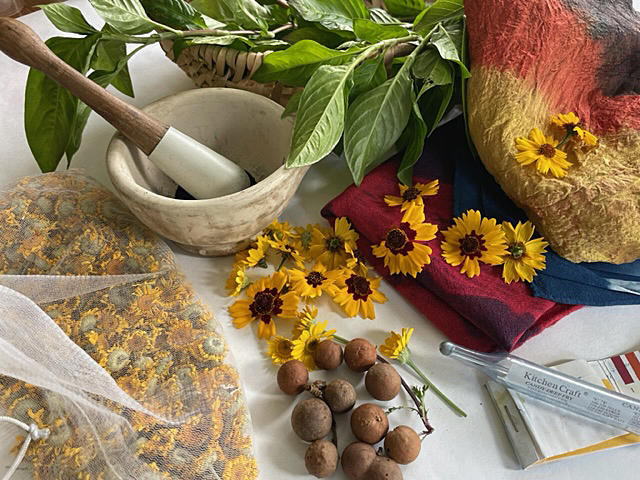
Learn how to use natural dyes and dye a rainbow of colours. The course will focus on different groups of plants which dye yellows, reds and browns, and learn the basics of making an indigo vat to dye blue. The course will also offer a brief introduction to the world of natural dyes and their rich history.
Students will dye with a wide selection of plant materials plus cochineal, an insect dye.
Some basic dye chemistry will be outlined as well as the preparation processes which fibre, yarn and fabric must undergo before dyeing. During the course students will dye a selection of reference samples on silk which they will take home. Overdyeing, and varying vat concentrations, will produce a selection of shades and a rainbow of colours.
Booking and details here
West Dean College (nr Chichester, Sussex)
A First Dip into Natural Dyes
18th – 20th August 2023
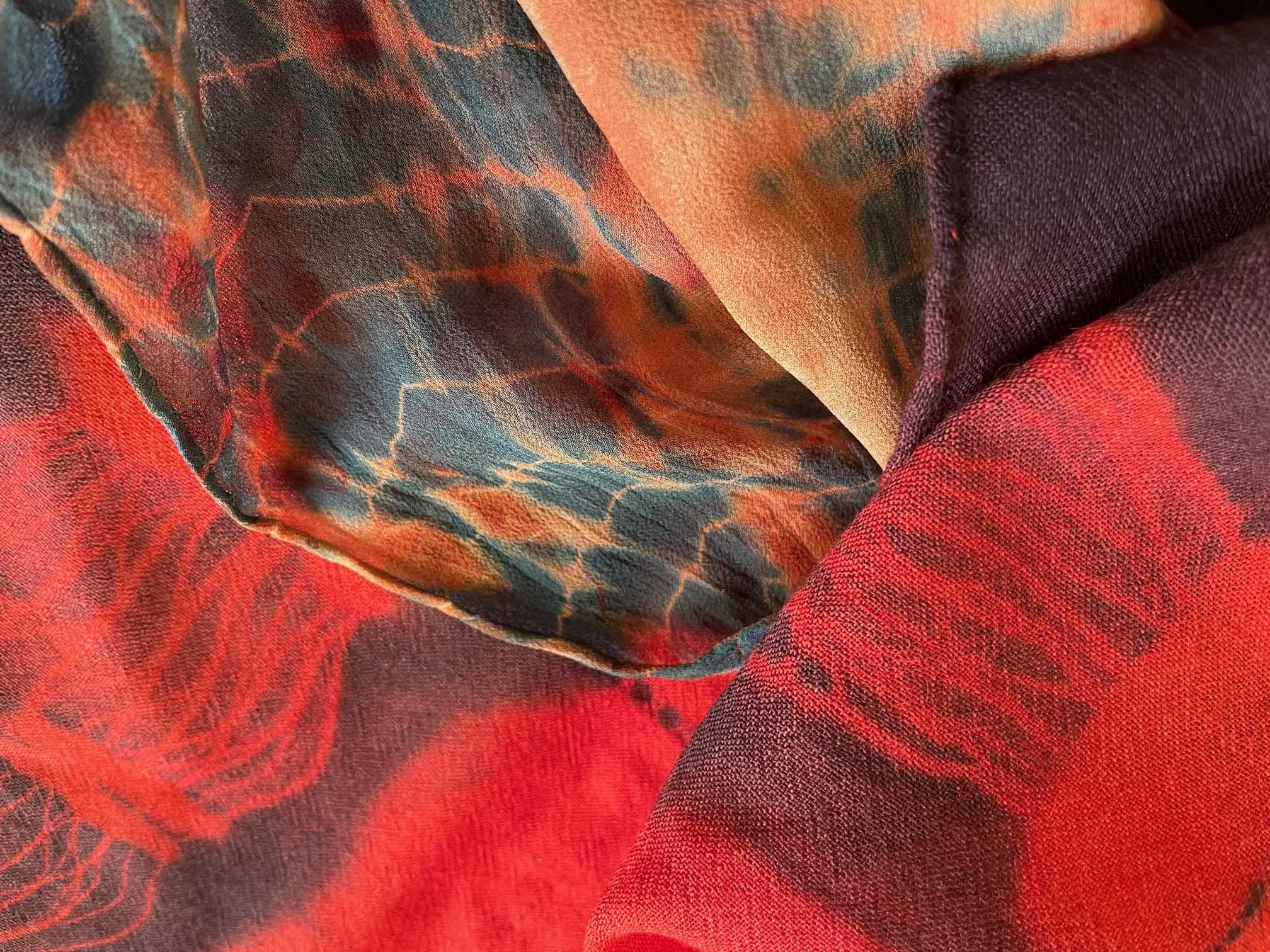
This course offers a hands-on introduction to the world of natural dyes and their rich and ancient history. Weld, madder, cochineal and indigo will be used, which all of these derive from plant material except cochineal, an insect dye. You can expect to use raw dyestuff as well as natural dyes available in extract form, and learn vital essentials of preparing materials before dyeing. There will be a practical session on mordanting with alum and cream of tartar, and other mordants will be outlined.
The tutor will also introduce the basics of making a natural indigo vat and two indigo vats, at different strengths, will be available.
Some simple dye chemistry will be outlined to enable you to prepare dyestuffs and dyes effectively and learn how to make and calculate stock solutions. You will dye a selection of reference samples on silk and cotton fabrics and wool yarn, using the four dyestuffs. Overdyeing combinations of dyes and using varying dye concentrations will result in a wide range of colours.
You will have the additional option of producing a natural-dyed silk scarf or small individual samples, and simple resist and dip-dye techniques will be demonstrated.
Please note that some of the dye materials and equipment used on this course will have come into contact with various nuts, so may not be suitable for those with nut allergies or sensitivity to dye plants.
Booking and details here
Links
West Dean College of Arts and Conservation here
RHS Rosemoor here

